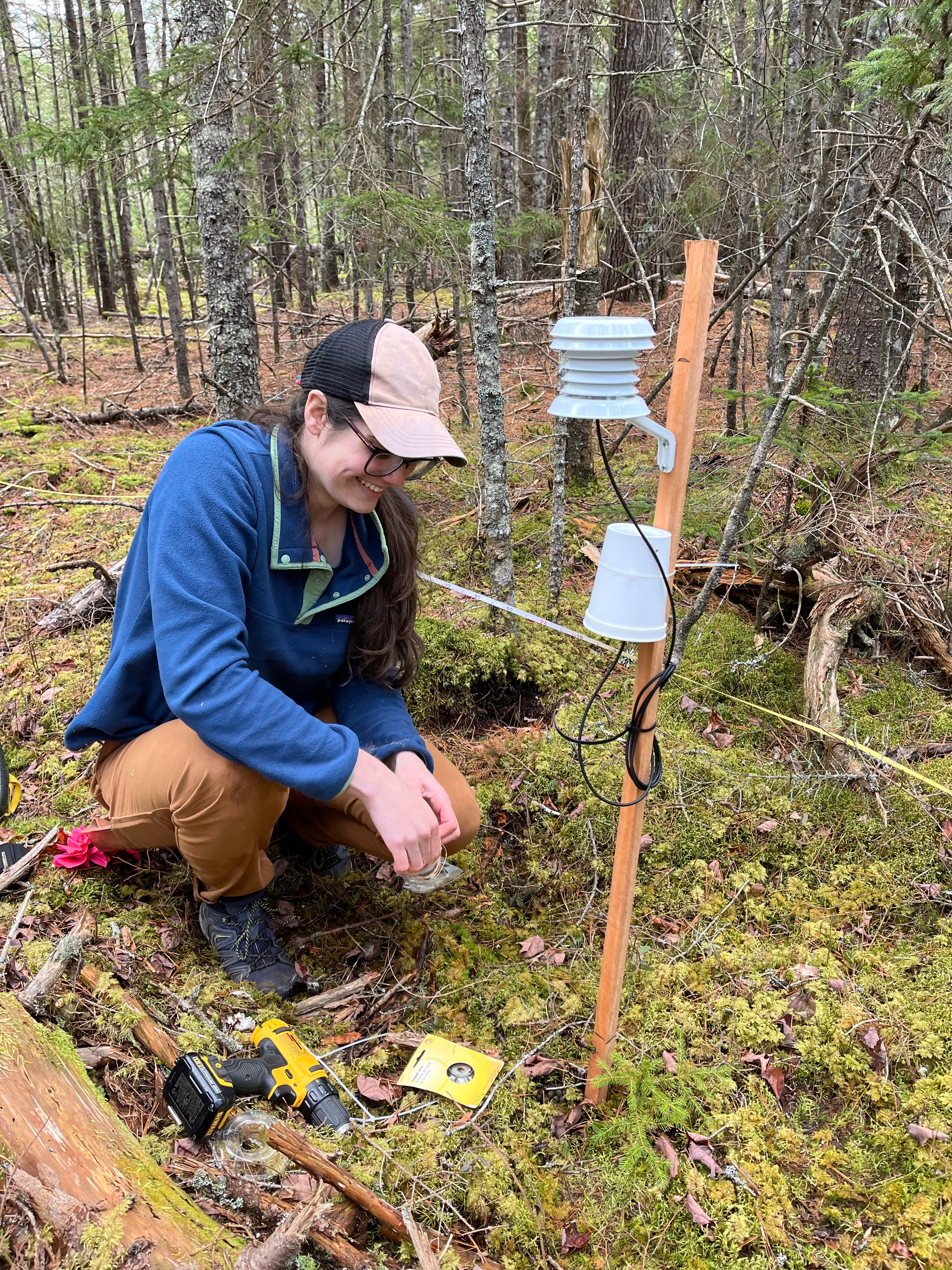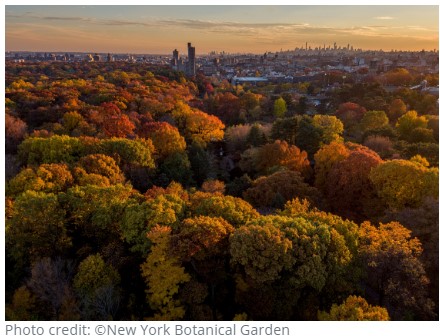The 2024 Ecosystem Monitoring Fund will support new or existing monitoring programs of forested ecosystems in the seven-state FEMC region. If you have questions about eligibility or the submission and evaluation process, please contact Elissa Schuett.

Submission Deadline:
March 22, 2024
Funding Amount:
$20,000 maximum; 1:1 non-federal match required
Contact:
Objectives of the Ecosystem Monitoring Fund
The Ecosystem Monitoring Fund will support forest ecosystem monitoring projects in the seven-state FEMC program area. The goal is to provide support for the collection, aggregation, analysis, and utilization of forest ecosystem monitoring information to better understand the current threats, historical trends, and future directions of the forested landscape in the Northeast. Basic research projects will not be funded. Basic research is a systematic study directed toward greater knowledge or understanding of the fundamental aspects of phenomena and of observable facts without specific applications towards processes or products in mind. However, research projects that include applications to practitioners are allowable, which may include methods development, impact analysis, trend analysis, and forest health monitoring activities.
Project Types: A wide range of project types will be considered for funding. As examples of the breadth of activities the FEMC hopes to support, this may include:
- the implementation of new monitoring programs to fill a critical gap in our understanding of forest response to novel stressors,
- upgrading an existing monitoring program to increase comparability with others in the region,
- aggregation of disparate data sets to expand the relevance of existing data,
- continuation and maintenance of existing long-term monitoring sites,
- digitization of key historical data sets to examine historical trends,
- collection of additional monitoring field data to address emerging needs,
- support or improvement of continuously deployed monitoring instrumentation,
- development of geospatial products to explore landscape patterns.
Project Focus: Projects may include any monitoring efforts related to forest ecosystem function, structure, and health. This may include forest vegetation, ecosystem services, invasive species, wildlife, water, soil, weather and climate, or air quality. Proposals for monitoring programs outside of these topics and activity types are welcome as long as there is a clear connection made to forest ecosystems in the Northeast.
Project Duration: Projects can be funded for up to one year, with all activities and reports completed by August 2025.
Fund Priorities: FEMC’s recent work generally focuses on the following themes:
- Forest Pests and Disturbance Regimes
- Forest Inventory and Relationship to Carbon and Management
- Climate Change Impacts on Forested Ecosystems
- Forest Regeneration
- Recreation and Forest Health
- Forest Ecosystem Data Rescue and Preservation
- Forest-Water and Forest-Wildlife Intersections
FEMC’s guiding committees have identified several priority topics of interest within these themes that would benefit from increased or improved monitoring. These priorities are not exhaustive – but meant to guide selection of successful proposals to fund.
- Carbon storage: improve the understanding of the impacts of invasive pests, assessment by forest type, or how timber management may play a role in carbon sequestration.
- Urban and community forestry: Define issues of forests in urban settings and consider what monitoring urban woodlands looks like. This may also include questions about increased development, land use change, and forest fragmentation.
- Invasive pest monitoring: including monitoring hemlock wooly adelgid, emerald ash borer, balsam wooly adelgid, spotted lanternfly, and others that may be emerging threats to the region.
- Forest regeneration capacity: identify thresholds for adequate regeneration by forest type or understand factors that result in a lack of regeneration.
- Deer browse: identify trends in browse impact and how browse affects the diversity of forests and plant communities.
- Invasive plants: monitor and map distribution to help inform where they are located and where they will spread.
- Old growth forests: standardize characterization of old growth and quantify the amount that exists.
- Hydrology: exploring forest-water connections and ecosystem services
Priority ranking will be given to projects that:
- Address one of the above topics and/or themes
- Align closely with the strategic mission and objectives of the FEMC and current issue priorities identified by the FEMC network (detailed in the FEMC workplan)
- Expand on existing forest ecosystem monitoring efforts (spatially, temporally, or informationally), including current or past FEMC projects
- Make use of data available in the FEMC data archive and use tools developed by FEMC to conduct analysis or synthesis such as the Forest Health Atlas, Forest Indicators tools, NEFIN, among others
- Have potential for impact across the larger FEMC stakeholder region
- Have the potential for ongoing support, and long-term viability
Funding Availability: A total of $40,000 is available in funding to support projects of up to $20,000 for up to one year, beginning in 2024, with a completion date of August 2025. This is a reimbursable grant award in which the University of Vermont is the direct sponsor of this award with funds federally sourced from the U.S. Forest Service. A 1:1 match of non-federal funds is required. We anticipate funding 2-3 projects.
Deadlines
| Proposals due | March 22, 2024 |
| Awards announced | April 19, 2024 |
| Awards begin | May 1, 2024 |
| Awards complete | August 1, 2025 |
Eligibility
Proposals will be accepted from personnel from universities, non-profit, state, tribal, or private organizations located in one of the FEMC member states: Connecticut, Maine, Massachusetts, New Hampshire, New York, Rhode Island, or Vermont. Investigators from other states can be included as co-author on the proposal but cannot lead the project.
Monitoring must be conducted primarily within one of the seven listed states. Monitoring conducted outside of these states with matching funds can be included.
Diversity
FEMC is committed to integrating principles of diversity, equity, inclusion, and justice (DEIJ) into our monitoring programs. FEMC will implement approaches in this RFP to reach diverse communities, both to conduct monitoring and who may benefit from monitoring. We encourage proposals from underrepresented organizations, or that will provide valuable information to these communities. Please include in the proposal narrative (see below) a description of how FEMC DEIJ goals will be met with this proposal. The details can be included throughout the proposal, but also specifically in the rationale, objectives, or outcomes sections.

Lead PI: Savannah Ferreira
Organization: State of Vermont Forests, Parks and Recreation and the Fungal Scientific Advisory Group
This proposal is seeking funds for 1) creation of a database of the known fungal species that have been documented in Vermont, and 2) to conduct two fungal forays in rare and/or threatened natural communities for species distribution and abundance. This database will be an aggregation and digitization of disparate fungal data sets to expand the relevance of future research related to carbon storage, old growth characterization and forest regeneration capacity, conservation needs, beginning to identify site specific fungi species to natural community assemblage patterning. The database will be used to create a checklist of fungi that currently and historically existed in Vermont and will be published and maintained at the Vermont Atlas of Life Integrated Publishing Toolkit (IPT) server to Global Biodiversity Information Facility (GBIF) as a Darwin Core Standard (DwC) checklist dataset and archived with the Forest Ecosystem Monitoring Cooperative. This checklist will be publicly available to expand on research and knowledge of fungi’s contribution to our New England forests. The planned fungal forays will supplement this database, by adding observations of fungal communities in rare and/or threatened habitats in Vermont.

Lead PI: Megan Grega
Organization: University of Maine
Climate change is expected to increase stress to forests. The red spruce (Picea rubens) forests of Maine’s coast are particularly vulnerable to such stress. These forests exist in coastal climate refugia south of their typical range, and it is unclear if the coast will continue to be a refugium as ocean and atmospheric temperatures rise. Despite the ecological, economic, and cultural importance of this forest type, we lack long-term monitoring studies in these unique coastal ecosystems. The goal of this study is to establish a long-term monitoring network focused on sensitive coastal red spruce forests and link patterns of daily and annual radial growth with climate extremes. We will conduct forest inventories (10 sites), monitor daily growth (using 100 automated point dendrometers that track small changes in tree diameter), and measure annual tree growth (using 300 xylem increment cores) across six coastal and four inland reference sites representing a broad range of climatic conditions. From these data we will address three objectives: (i) determine the climate conditions that lead to tree water stress (stem shrinkage) and growth through measurements of daily stem diameter, (ii) determine if the factors that govern daily growth are the same as those that govern annual growth, and (iii) establish a long-term coastal spruce forest monitoring network. By combining climate-growth relations with long-term monitoring efforts we will improve our ability to predict how red spruce forests will respond to future climate stressors.

Lead PI: Brad Oberle
Organization: New York Botanical Garden
As the world’s first old growth, urban research forest the Thain Family Forest (TFF) at the New York Botanical Garden (NYBG) can provide an invaluable reference for regional forest ecosystem monitoring with upgraded data to address emerging needs. Climate change mitigation and adaptation require healthy forests, especially in cities. However, urban forest monitoring lacks an old-growth reference for soil carbon (C). Furthermore, urban soils may pose unique risks with increasingly heavy rainfall, which can remobilize accumulated heavy metals. This project will upgrade the TFF monitoring program to better understand current threats, historical trends and future directions of the urban forested landscape in the Northeast through four related objectives. First, we will follow an international standard for soil C monitoring aligned with the decades-old TFF Continuous Forest Inventory (CFI) program. Second, we will leverage existing hydrological instrumentation and the Soil Climate Analysis Network protocol by deploying the first local weather station focused on hydrology. Third, we will restart the first regional study of forest urbanization by remeasuring soil health, including heavy metal concentrations. Finally, we will implement our project in a sustainable, inclusive and equitable way by supporting the NYBG internship program and coordinating with a regional urban forest advocacy group.
